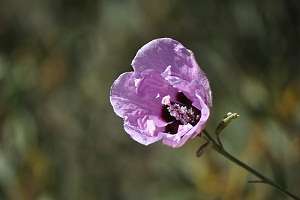Half-century long study points the way for rehabilitation activities

A study spanning 52 years has explored the survival and fertility of desert plants in WA.
Beginning in 1960, 22 species of arid–zone perennial plants were selected at six sites in the Murchison district and Gibson Desert of WA.
The plants were individually marked and monitored for flowering, fecundity (fertility) and survival.
The stages of reproduction were recorded as sterile, in bud, flower, fruit or seed or a combination of these stages.
Seed trays were placed beneath the plants to measure fecundity by counting the number of pods collected.
The authors say that the study's findings have important implications for restoration efforts in the arid–zone to restore ecosystems damaged by grazing and mining activities.
"A thorough understanding of the longevity and fecundity of plants in the arid zone of Australia is expected to be of value in the choice of species used for regeneration of disturbed areas in this zone," the authors write.
"[This includes] for planning of rehabilitation activities, and to students of plant demography."
Curtin University Department of Environment and Agriculture Adjunct Professor and co-author Stephen Davies says there are several ways that the findings can be applied.
"There is an advantage in having some idea of how long plants live for…you might plant plants that have a relatively short life and then gradually stabilise the soil," Prof Davies says.
"While slower growing plants that have a much longer life can in the meantime become established.
"Acacia victoriae for example, is not a long-lived plant. When it dies, its branches fall down forming barriers of sand and soil.
"Those banks are sufficient to enable seeds of other plants to become established."
The study found that while fecundity is related to high rainfall there is some evidence that after a fruitful year, plants respond less vigorously to periods of high rainfall.
"The observations suggested that some arid–zone plants took a year or more after a very fecund year to recover sufficiently and respond fully to the amount of rainfall that would generate a substantial crop," the authors write.
"[It] is interesting in comparison with conventional wisdom that desert plants reproduce abundantly whenever environmental conditions permit.
"It suggests that proximal factors, for example exhaustion of a plant's resources or exhaustion of available soil nutrients, may also partly control fecundity."
Provided by Science Network WA

















